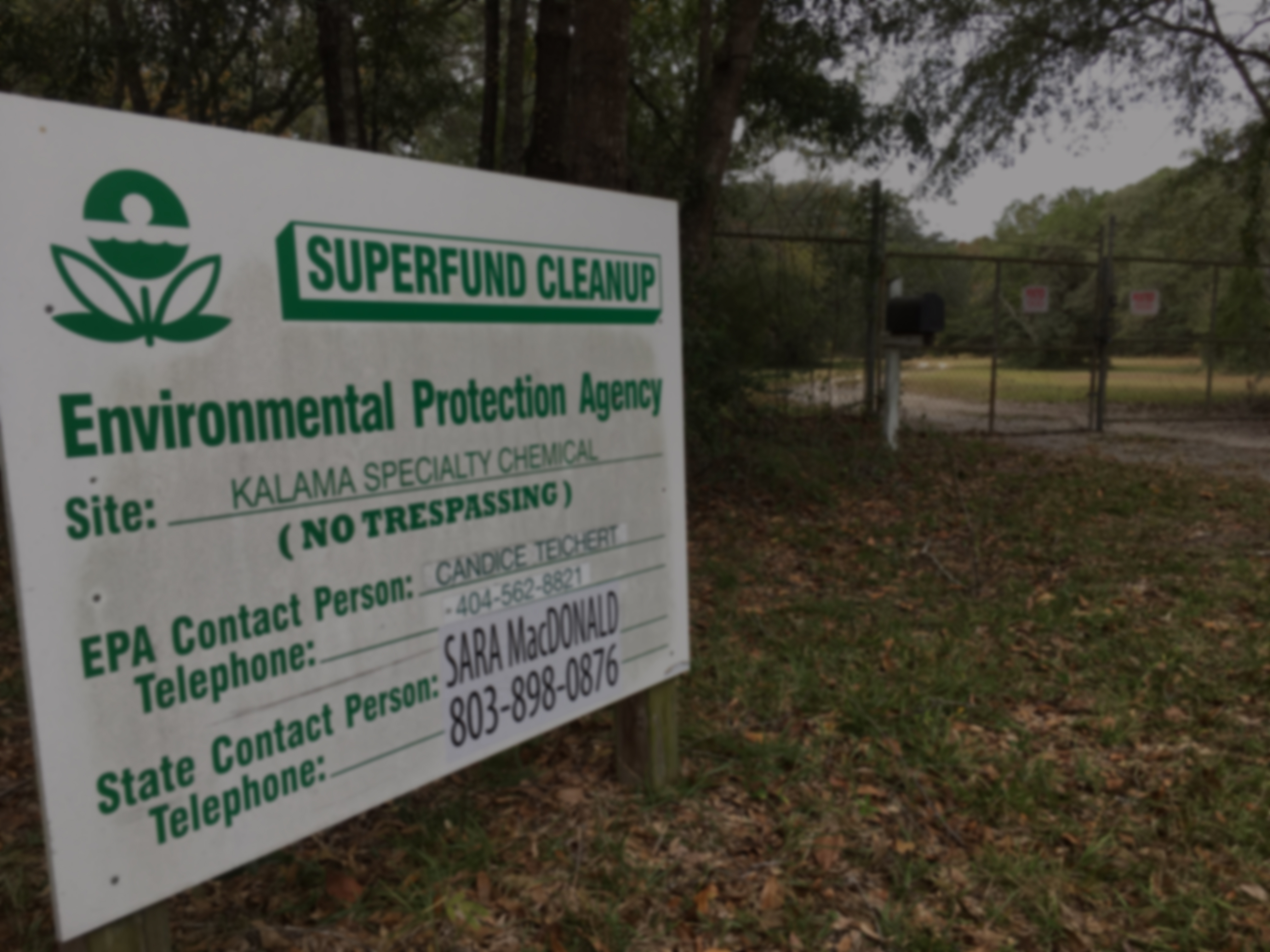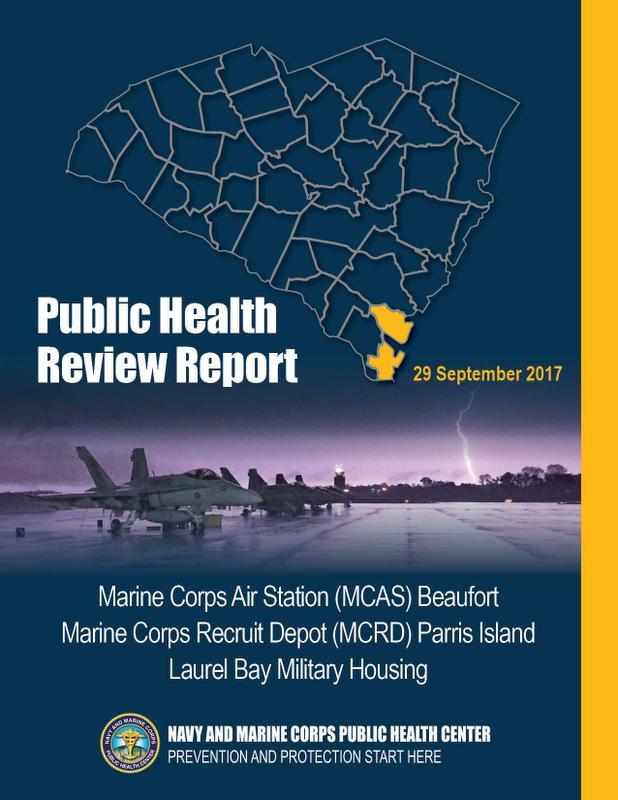Wade Benton remembers the year because the 1968 Ford pickup was new.
The children of the Gray’s Hill mobile park his family owned, Benton Trailer Park, passed time in a nearby swimming hole. They built a 10-foot pile of dirt for a perfectly fine diving board and jumped into the pond.
Benton believes a nearby chemical plant at some point began emptying waste into the pond from across the property line via a shovel-width ditch. Flying leaps into the pond began producing suds and murky water.
“We didn’t know what it was until the fish started dying,” Benton said.
The family would find out soon, and their property would never be the same following a horrific event felt throughout Beaufort County.
After the fish died, Benton’s father went to the chemical company and asked them to restock the pond.
His father was referred to the company’s attorneys.
“We went on and on with problems with them right up until they exploded,” Benton said.
Polluted past
Outside Laurel Bay's gates exists a history of nearby private industry and the Marine Corps polluting the soil and groundwater.
Three heavily polluted areas within a few miles of the military housing community and Marine Corps Air Station Beaufort in northern Beaufort County have been flagged by federal environmental officials throughout the years as Superfund sites requiring long-term monitoring.
A fourth Beaufort County Superfund site is Marine Corps Recruit Depot Parris Island. The depot is one of three Beaufort County sites still listed as a federal priority for regular monitoring.
The U.S. Environmental Protection Agency designates Superfund sites in areas that have been contaminated by hazardous waste deemed a threat to human health or the environment. The properties are added to a national list as a top priority to clean up.
The industrial contamination came decades ago and included runoff from an explosion at a former chemical plant and tainted wastewater discharged by hardware and textile dye manufacturers. Additionally, the air station’s waste disposal methods and accidental spills throughout the years have threatened groundwater and nearby marshes, according to past environmental assessments.
About 140 potentially toxic sites were identified at the air station in a recently released public health review of the base, with more than half requiring no further cleanup.
Investigating and cleaning up hazardous waste sites at MCAS Beaufort cost $20.8 million through September 2015, according to the most recent Department of Defense data. Another $29 million is needed to clean up the sites, with a targeted completion date of 2054, the DoD estimates.
The contaminated sites include the underground heating oil tanks at the Laurel Bay military housing community, areas with unexploded bombs, and dumping areas like trenches where hundreds of thousands of gallons of contaminated jet fuel and other liquid waste were once disposed.
Other sites can’t be addressed because of current Marine Corps uses. For instance, old gun ranges are now part of an active airfield and other sites are under the runway.
Despite the prevalence of hazardous sites, environmental officials say Laurel Bay residents and Marines weren’t exposed to tainted groundwater and soil in a way that could affect them.
“(The health study) recommendation was to continue to do exactly what we’ve been doing, which is do our investigations following all DHEC standard practices and just continue going like we are right now,” MCAS environmental officer Billy Drawdy said. “None of the sites we have at the air station do we think there are any serious health issues, or health exposure pathways that would affect anyone's health.”
At Parris Island, which has numerous sites that have been addressed under the Superfund program and others awaiting cleanup, the same is true, a depot spokesman said.
“We have a program for monitoring and inspecting those sites,” said Tim Harrington, Parris Island’s environmental affairs officer. “We are safeguarding everybody’s health. The sites don't pose a risk to the public.”
Cleaning up the depot’s 35 hazardous waste sites cost $31.7 million through the 2016 fiscal year, Department of Defense numbers show. Another $18.6 million will be needed to finish the cleanup by 2033, the military estimates.
As part of a recently released health investigation of Laurel Bay and nearby areas, Navy officials said they reviewed the EPA’s Superfund website to determine that the sites aren’t a threat to people living and working nearby, including Laurel Bay residents. They didn’t independently investigate the sites as part of the health investigation, instead reviewing documents and yielding to the federal agency’s process.
“We're not going to second-guess EPA,” said Paul Gillooly, the health center’s project manager for the Laurel Bay health probe. “If everything looks like it's in order, the investigation was done and the sampling was done correctly, we're going to go with that data.”
Contamination from the private manufacturers and dump and spill sites at Marine Corps Air Station Beaufort throughout the years likely contaminated the underground source where thousands in Beaufort and Jasper counties once drew their water from private wells and flushed hazardous chemicals into nearby marshes, according to a 1986 federal assessment of the air station’s contaminated sites.
Craig Ehde, who oversees the air station’s potential hazardous waste sites, said there is no contamination in the deeper water source known as the Floridan aquifer. Ehde said he didn’t believe the aquifer had ever been contaminated.
Beaufort-Jasper Water and Sewer Authority worked with local military bases in 1965 to build a new water supply center that pulled the majority of water from the Savannah River. The water authority does tap two deep-water wells during times of high demand, but the water is stringently tested, air station officials said.
Much of the contamination in northern Beaufort County happened decades ago but is still subject to regular testing to ensure no ongoing threat, according to officials.
Massive explosion
In 1979, Kalama Specialty Chemicals, a former chemical plant manufacturing herbicides across from the air station off Trask Parkway, discharged a medley of chemicals into the ground after a laboratory experiment resulted in a large explosion, EPA documents show.
The blast was large enough to fling heavy metal across the road onto the MCAS runway, Benton said. At the Benton Trailer Park, walls collapsed and homes tumbled from their foundations, he recalled.
The manufacturer had already been scrutinized by state health officials for disposal practices before the explosion. At one point, smog from the plant regularly covered Trask Parkway and affected drivers’ visibility, Benton said.
The cloud smelled of sulfur and ammonia and appeared on Sundays when contacting anyone to complain was a chore, he said.
The site was placed on a national list as a top federal cleanup priority. In 1993, almost 15 years after the explosion, state and federal officials approved a long-term plan to clean and monitor the contaminated area.
Groundwater is still pumped and treated at the site, with treated samples collected monthly, according to environmental officials. Samples from wells are tested twice a year.
More wells will be installed in the coming months to test groundwater on the site to address “data gaps and the need for additional delineation,” EPA spokesman James Pinkney said.
Another five-year review of the site is scheduled in 2018.
After the explosion, the mobile home park’s sewer system was deemed contaminated by state environmental officials, Benton said. The chemical company eventually bought the family’s property, which had become uninhabitable.
After the explosion and purchase, Benton was driving on the property when he came across a large hole in ground between the family’s former home and barn packed with 55-gallon drums. State environmental officials found drums buried on the property before the explosion, EPA documents show.
“I don’t know what they buried, but I know as deep as they buried those drums, there was something they didn’t want anybody to find,” Benton said.
Two other nearby Superfund sites were being polluted at the same time.
From 1969 until 1980, hardware manufacturer Blake and Johnson Company each day dumped an estimated 33,000 gallons of water containing metals and other chemicals into a lagoon on its site just west of the air station and a few miles from Laurel Bay, EPA records show.
State environmental and health officials discovered a break in the lagoon in 1975, which allowed the waste to flow into a nearby ditch. Groundwater testing that year found chromium, lead, iron and mercury in the water exceeded drinking water standards, according to EPA records.
The site was deemed a national cleanup priority in 1983 and five years later, the EPA found groundwater contamination wasn’t a health or environmental hazard, according to records.
As part of the cleanup, contaminated soil was dug up, solidified and returned to the lagoon area, records show. Groundwater testing ended in 2003.
The site was removed from the national priority list in 1995 and multiple businesses currently use the site. But restrictions were placed on future land and water use, records show.
The property can’t be lived on, farmed or used for recreational purposes, according to a 2016 agreement. The agreement also bars day cares, schools and assisted living facilities on the property.
Five-year inspections will restart in 2021.
A dye plant on a small island a mile north of the air station at one point decades ago discharged chemical waste directly into nearby McCalley Creek. The deeper underground water source and nearby oyster beds weren’t found to be contaminated during later testing, but shallower water sources were affected, according to records.
Springs Industries, which is responsible for the cleanup, treated 1,800 tons of soil at the site in 1993. Five wells were built in 1996 to pull and treat contaminated water, and pump it into the creek, records show.
Water is still being pumped and treated at the site, with another review scheduled in 2019.
The site is not far from Benton’s current home in Stuart Point. His house backs up to the same creek.
Stephen Fastenau: 843-706-8182, @IPBG_Stephen
Next Story: It 'eats me alive to this day'

